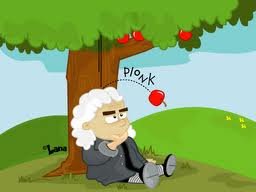Gravity and Gravitation
Gravity and Gravitation

The motion of celestial bodies has always been a subject of interest for a long time for humankind. The prediction of eclipses and equinoxes was considered to be a great sign of intelligence in ancient Europe. In Indian civilization, astronomy had a prominent effect but this science was looked differently. Its primary goal was astrological. Regarding the development of gravity and gravitation, the contribution of Indian astronomers and mathematician AryaBhatta and Brahmagupta was remarkable. Aryabhatta in his book Aryabhatiya concluded that earth revolves about its own axis and moves in a circular orbit about the sun, and that moon moves in a circular orbit about the earth. About a thousand years after Aryabhatiya and before Newton Tycho Brahe (1546-1601) and Johnasse Kepler (1571-1630) studied the planetary motion and formulated as laws known as Kepler's laws. The findings of Kepler are
All planets move in elliptical orbits with the sun at a focus.
The radius vector from the sun to the planet sweeps an equal area in equal time.
The square of the time period of a planet is proportional to the cube of the semi-major axis of the ellipse.
Meanwhile, the birth of Sir Isaac Newton(1642-1727) was considered as grand not only in the field of gravity and gravitation but in entire mathematics and physics. Newton's interest in gravity was stimulated, according to his own account, by watching an apple fall from a tree. If the moon would fall, pulled by the same force as the apple, he concurred, it was the centrifugal force that would balance this pull and keep the moon in its orbit. After long years of study and thinking, Newton proposed the universal law of gravitation in 1687. The value of universal gravitational constant was not known by then which was later found experimentally.
References:
University Physics, Hugh D young
Advanced level Physics, Nelson and Parker